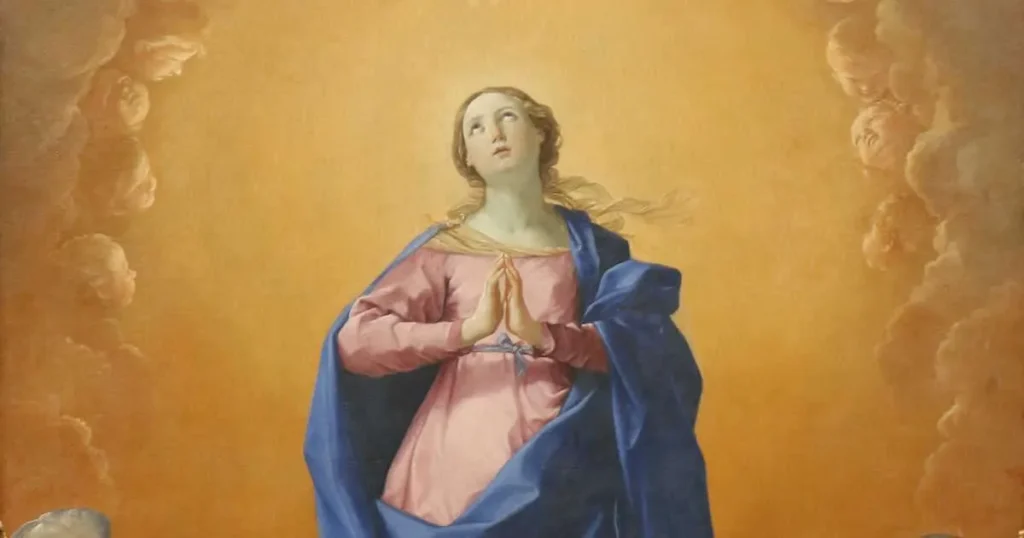The teaching of the Perfect Origination alludes to the confidence in the Catholic Church that Mary, the mother of Jesus, was considered without unique sin. While this teaching was officially characterized in 1854 by Pope Pius , the idea of Mary’s Perfect Origination has been examined, loved, and reflected upon by different holy people over the entire course of time. Here is a clarification according to the points of view of a few prominent holy people.

The Congregation addressed Nestorius’ contentions about that Marian title back in the fifth 100 years, prodded on by standard Catholics who had been tending to Mary as the Mother of God for a really long time and were stunned that anybody would address it. Likewise, it was cloisters and ministers, supported by the commitment of the people, who started the act of commending a blowout to pay tribute to the origination of the Favored Virgin Mary by Holy person Anne, presumably as soon as the seventh hundred years .Immaculate Conception
At the point when Holy person Bernard of Clairvaux scrutinized this boundless practice in the twelfth 100 years, he was simply requesting that his kindred Catholics make sense of exactly what they accepted when they commended that blowout. Holy person Thomas Aquinas inspected the two sides of the contention and seems to have dismissed the possibility that she was flawlessly imagined. In any case, some say that the contentions that Thomas raised made it feasible for resulting scholars to figure out what we can be familiar with Mary’s origination and how to explain it.
That, all things considered, was the robbery for a very long time. What is reality with regards to Mary concerning sin, even before she brought forth Jesus Christ, and how might we communicate it honestly?
Yet, it was Honored John Duns Scotus who established the groundwork for this showing in the fourteenth hundred years. Scotus was a Franciscan cleric, scholar, and logician, and a whole philosophical and religious way of thinking, called Scotism, was subsequently named after him. Like different Franciscans at that point, he firmly and freely protected the Perfect Origination of Mary.
In a popular question in Paris, Scotus was called upon to make sense of his situation before ecclesiastical legates. An undeniable contention against his proposition was the way that Jesus Himself had not yet been conceived when Mary was imagined. Didn’t the possibility that Mary was righteous before Her Child was even imagined suggest that she didn’t require a Savior?
One of Scotus’ focuses was that Mary’s purification after activity (when her body accepted her spirit at origination) followed the request for nature, not the request for time. Jesus was, is, and at any point will be our ideal Savior, and He isn’t restricted by time. The Blood that streamed on Calvary recovered us all since the Execution, however the graces from that equivalent penance streamed in reverse so as to favor Mary from the snapshot of her origination.

Augustine of Hippo (354-430):
St. Augustine, a Specialist of the Congregation, didn’t explicitly examine the Impeccable Origination as it is characterized today, yet he composed widely on the idea of unique sin. He accepted that all people are brought into the world with unique sin, acquired from Adam and Eve, with the exception of Jesus and Mary. He held Mary in high regard, alluding to her as a model of beauty and prudence.
Thomas Aquinas (1225-1274):
St. Thomas Aquinas, one more Specialist of the Congregation, didn’t expressly uphold the possibility of the Impeccable Origination as it wasn’t officially characterized during his time. He did, nonetheless, hold Mary in the most noteworthy respect and expounded broadly on her immaculateness and blessedness. He recommended that Mary was purified in the belly right now of her origination yet didn’t expressly avow the shortfall of unique sin at her origination.
Bernard of Clairvaux (1090-1153):
St. Bernard, known for his significant commitment to the Favored Virgin Mary, alluded to her as the “tota pulchra” (all lovely) and accentuated her virtue and holiness. He discussed her being “brimming with beauty” and had faith in her extraordinary and exceptional job in God’s arrangement for salvation.
Maximilian Kolbe (1894-1941):
St. Maximilian Kolbe, a more contemporary holy person, intensely advanced the Impeccable Origination of Mary. He saw her as the “Immaculata,” the completely righteous one, and accepted that her virtue was an unmatched illustration of God’s beauty. St. Maximilian committed his life to spreading dedication to Mary and her part in God’s arrangement for mankind’s salvation.